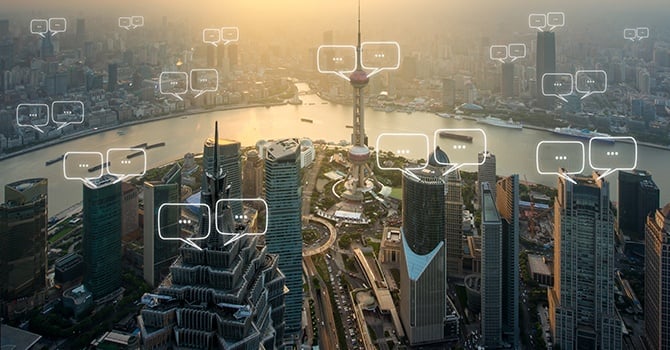
In today’s world, things move quickly and people are juggling numerous tasks on an increasingly tightened timeline and budget. To support the demand for heightened efficiency, more and more companies – regardless of industry – are moving toward a service desk model that enables end users to get the IT support they need in a timely manner.
Therefore, live chat – where end users enter text into an integrated desktop or mobile chat window to notify the service desk of an IT issue – is in ever-greater demand as a contact method.
Live chat is one of the fastest, most efficient ways for end users to enter their tech support requests. It empowers them to multitask as their ticket is being resolved. It also enables service desk agents to work on multiple tickets and access various service desk tools, so that they can offer the best knowledge and support needed to get users back up and running quickly.
Here are three reasons why live chat is a must-have contact method for end users.
- It increases efficiency. Everyone benefits from the ability to multitask. Live chat empowers end users to create a ticket and seek resolution regardless of their setting or device – without interrupting their daily schedule. Instead of pulling their focus from a meeting or other critical tasks, users can discuss their technical issues with a service desk operator in real time, without sitting on the phone. Additionally, users can submit their request along with a preferred contact time, if receiving resolution is not optimal at that particular moment.
Similarly, live chat enables service desk operators to respond quickly with standard answers for known issues and other helpful resources that help them alleviate end-user issues in real time. Best of all, it helps agents to address multiple tickets at once, so no time is wasted on either side.
- Users get a quick response time. Who doesn’t like getting their problems solved in under a minute? Eighty percent of chats are answered in 60 seconds or less, according to industry averages. When shopping for an outsourced service desk provider, you should also look for one that provides a high first-contact resolvable (FCR) rate. Industry average is 68 percent, but top-notch providers offer a 90 percent FCR rate.
This is the whole point of using live chat – when issues arise, users don’t always have time to spend away from their work on a phone call, or waiting for an emailed response from the service desk. Live chat enables the end user nearly instant access to an agent who has answers, while enabling the agent to respond quickly with a proven solution, so both parties can move on more quickly to the rest of their day.
- It’s a personalized experience. Nothing is worse than users feeling like they’re talking to a robot when they’ve got technical issues that need immediate resolution. Using live chat provides the peace of mind that there is a real human on the other end of the chat – without being tied to a phone.
Available 24x7, regardless of device type, live chat is a personal service that ensures all feedback is captured within the agent-created service desk case. So, each user’s case can be revisited if needed, and unlike a phone call, users can print, save, and email transcripts of the conversation for their reference.
In a world where we’re always feeling squeezed for time, implementing contact methods that create efficiency for users is a must. Live chat enables end users to stay productive and efficient regardless of the technical issue.
Does your service desk provider offer live chat? If so, do you find it beneficial? If not, what suggestions do you have that would benefit your end users? Please submit a comment below.

